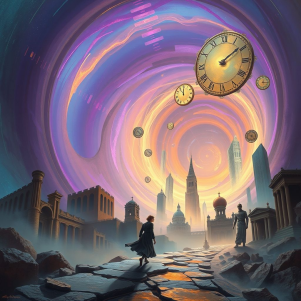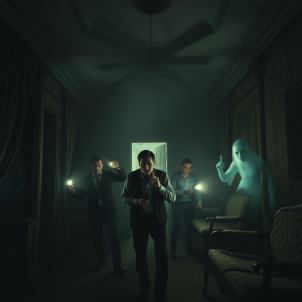
The Ghost Hunters’ Guide: Tips and Tricks for Capturing Evidence of the Paranormal
Ghost hunting has become a popular hobby and profession, with many individuals and teams dedicating themselves to investigating claims of paranormal activity. Whether you’re a seasoned ghost hunter or just starting out, capturing evidence of the paranormal can be a challenging and thrilling experience. In this article, we’ll provide you with a comprehensive guide to tips and tricks for capturing evidence of the paranormal, helping you to increase your chances of success and make the most of your ghost hunting adventures.
Preparing for an Investigation
Before you begin your investigation, it’s essential to prepare yourself and your equipment. Here are a few tips to get you started:
- Research the location: Learn as much as you can about the location you’ll be investigating, including its history, previous sightings, and any reported paranormal activity.
- Choose the right equipment: Invest in a good quality camera, audio recorder, and EMF meter. These will be your primary tools for capturing evidence of the paranormal.
- Develop a plan: Create a plan for your investigation, including the areas you’ll be investigating, the equipment you’ll be using, and the procedures you’ll follow.
- Assemble a team: Consider assembling a team of investigators, each with their own unique skills and expertise. This will help you to cover more ground and increase your chances of capturing evidence.
Capturing Visual Evidence
Visual evidence, such as photographs and videos, can be a powerful tool for capturing proof of the paranormal. Here are a few tips for capturing visual evidence:
- Use a high-quality camera: Invest in a good quality camera with a high megapixel count and good low-light performance.
- Use a tripod: A tripod will help you to stabilize your camera, reducing camera shake and blur.
- Shoot in RAW format: Shooting in RAW format will give you more flexibility when editing your photos, allowing you to adjust exposure, contrast, and other settings.
- Look for unusual lighting: Pay attention to unusual lighting effects, such as orbs, mist, or unexplained shadows.
- Take multiple photos: Take multiple photos of the same location, using different angles and lighting setups.
Capturing Audio Evidence
Audio evidence, such as EVPs (Electronic Voice Phenomena), can be a powerful tool for capturing proof of the paranormal. Here are a few tips for capturing audio evidence:
- Use a high-quality audio recorder: Invest in a good quality audio recorder with a high sampling rate and good noise reduction capabilities.
- Use an external microphone: An external microphone will help you to pick up clearer audio and reduce background noise.
- Ask questions: Ask questions during your investigation, such as "Is there anyone here with us?" or "Can you make your presence known?"
- Listen carefully: Listen carefully to your audio recordings, paying! attention to any unusual sounds or voices.
- Use audio editing software: Use audio editing software to enhance and analyze your audio recordings, helping you to pick out subtle sounds and voices.
Capturing Other Types of Evidence
In addition to visual and audio evidence, there are other types of evidence that you can capture during a ghost hunt. Here are a few tips:
- Use an EMF meter: An EMF meter can help you to detect unusual electromagnetic fields, which may be indicative of paranormal activity.
- Use a thermometer: A thermometer can help you to detect unusual temperature fluctuations, which may be indicative of paranormal activity.
- Use a K-II meter: A K-II meter can help you to detect unusual electrical activity, which may be indicative of paranormal activity.
- Conduct a sweep: Conduct a sweep of the location, using a variety of equipment to detect any unusual activity.
- Keep a journal: Keep a journal of your investigation, recording any unusual occurrences, sightings, or experiences.
Analyzing Your Evidence
Once you’ve captured your evidence, it’s essential to analyze it carefully. Here are a few tips:
- Look for patterns: Look for patterns in your evidence, such as repeated sightings or unusual sounds.
- Check for inconsistencies: Check your evidence for inconsistencies, such as unusual lighting effects or unexplained shadows.
- Use software: Use software to enhance and analyze your evidence, helping you to pick out subtle details and patterns.
- Seek second opinions: Seek second opinions from other investigators or experts, helping you to confirm or debunk your findings.
- Be patient: Be patient and persistent, as analyzing evidence can be a time-consuming and labor-intensive process.
Conclusion
Ghost hunting can be a thrilling and rewarding hobby, but it requires patience, persistence, and attention to detail. By following these tips and tricks, you’ll be well on your way to capturing evidence of the paranormal and making the most of your ghost hunting adventures. Remember to always approach your investigations with a critical and open-minded attitude, and never be afraid to seek help or guidance from other investigators or experts. Happy ghost hunting!


